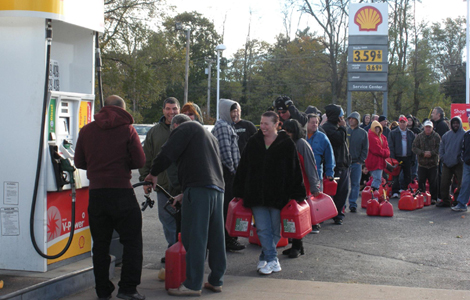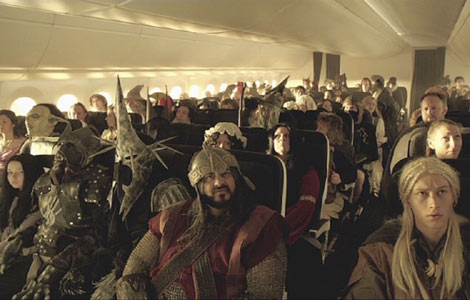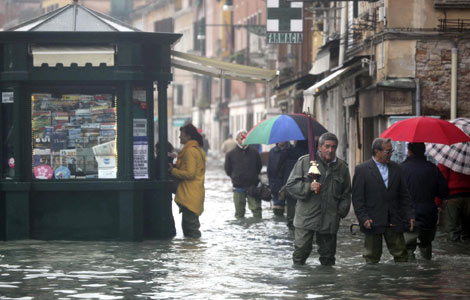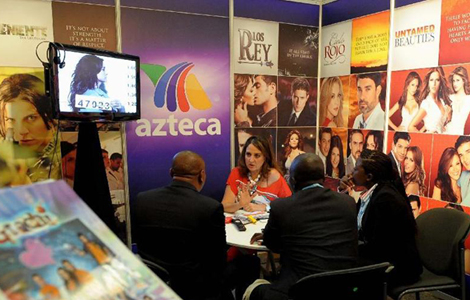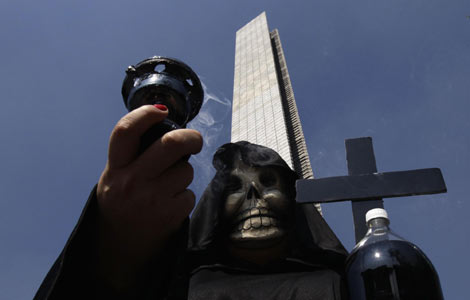
![The SpaceX Falcon 9 rocket launches from Space Launch Complex 40 at the Cape Canaveral Air Force Station in Cape Canaveral, Florida, Oct 7, 2012. [Photo/Agencies] SpaceX commercial cargo capsule blasts off](../../images/attachement/jpg/site1/20121008/0023ae9885da11dc82e203.jpg) |
|
The SpaceX Falcon 9 rocket launches from Space Launch Complex 40 at the Cape Canaveral Air Force Station in Cape Canaveral, Florida, Oct 7, 2012. [Photo/Agencies] |
WASHINGTON - An unmanned cargo capsule blast off Sunday night to launch the first commercial delivery to the International Space Station, marking a major shift in how US sends supplies and gear to the orbiting lab.
Perched atop a Falcon 9 rocket, the Dragon capsule, built by the private spaceflight company SpaceX, lifted off from the Cape Canaveral Air Force Station in Florida at 8:35 pm EDT (0035 GMT Monday), NASA TV shows.
This is the first of 12 contracted flights by SpaceX to resupply the space station and marks the second trip by a Dragon to the station, following a successful demonstration mission in May.
The capsule is packed with about 1,000 pounds (454 kg) of cargo, including experiment hardware, a freezer, spare parts, clothing and food. Taking advantage of the freezer, ice cream was included, a rare treat for space crews. It is also carrying 23 microgravity experiments designed by students.
If all goes well, station astronauts will use the lab's robot arm to grapple Dragon on Wednesday morning, maneuvering it to a berthing at the Earth-facing port of the forward Harmony module.
The capsule is slated to return in late October with about 2,000 pounds (907 kg), including scientific experiments and failed equipment that can be repaired and sent back.
"It actually marks the beginning of true commercial spaceflight to take cargo to the International Space Station for us," NASA Administrator Charles Bolden said during a video chat on Google Plus on Friday.
The SpaceX Dragon is the only space station cargo craft designed to safely return to Earth, a critical capability that was lost when NASA's space shuttle fleet was retired in 2011. The Russian Soyuz spacecraft that ferry crews to and from the space station can only carry a few hundred pounds of small items back to Earth. All other station vehicles -- unmanned Russian Progress supply ships and European and Japanese cargo craft -- burn up during re-entry.
Before Dragon's liftoff, flights to the space station have always been a government-only affair.
Until their retirement last summer, US space shuttles carried most of the gear and many of the astronauts to the orbiting outpost. Since then, American astronauts have had to rely on Russian capsules for rides. European, Japanese and Russian supply ships have been delivering cargo.
NASA is looking to the private sector, in this post-shuttle era, to get American astronauts launching again from US soil. It will be at least four to five years before SpaceX or any other private operator is capable of flying astronauts.
![SpaceX' Falcon 9 rocket is prepared for a launch attempt from Space Launch Complex 40 at the Cape Canaveral Air Force Station in Cape Canaveral, Florida, Oct 7, 2012. [Photo/Agencies] SpaceX commercial cargo capsule blasts off](../../images/attachement/jpg/site1/20121008/0023ae9885da11dc834904.jpg) |
|
SpaceX' Falcon 9 rocket is prepared for a launch attempt from Space Launch Complex 40 at the Cape Canaveral Air Force Station in Cape Canaveral, Florida, Oct 7, 2012. [Photo/Agencies] |
